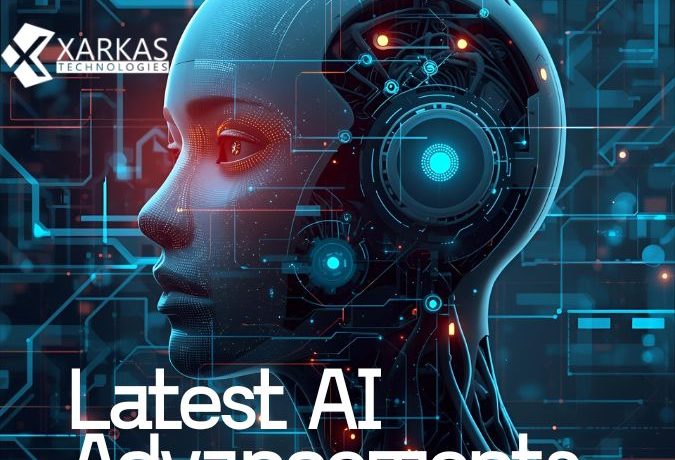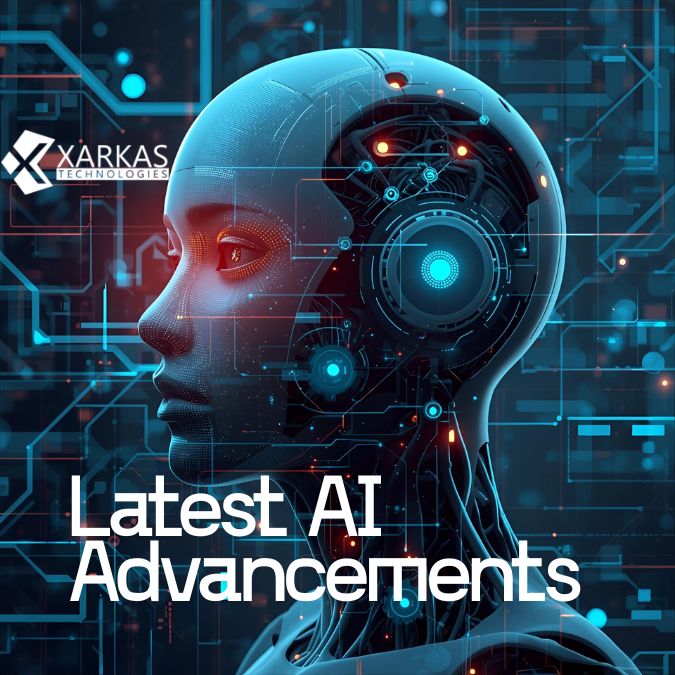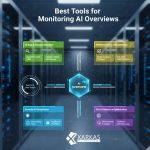
Latest AI Advancements in 2025
Introduction
Artificial Intelligence (AI) has crossed another milestone in 2025, marking a year filled with astonishing progress. From creating life-like digital humans to revolutionizing medicine, AI advancements in 2025 are reshaping how we live, work, and think. Let’s dive into the most exciting innovations that define this transformative year.
Table Of Content
- Introduction
- A Quick Look at AI Evolution
- Why 2025 Is a Landmark Year for AI
- Breakthrough 1: Multimodal AI Models
- How Multimodality Is Changing User Interaction
- Real-World Applications
- Breakthrough 2: Generative Agents and Digital Humans
- AI Companions and Assistants
- Impact on Customer Service and Entertainment
- Breakthrough 3: AI in Healthcare
- Predictive Diagnosis and Early Disease Detection
- AI-Assisted Surgeries and Personalized Medicine
- Breakthrough 4: Autonomous AI in Robotics
- Self-Learning Robots in Manufacturing
- AI-Powered Drones and Logistics Automation
- Breakthrough 5: AI and Quantum Computing Integration
- Quantum-Enhanced Machine Learning
- Future Potential and Challenges
- Breakthrough 6: Ethical AI and Governance
- AI Laws and Safety Frameworks
- Transparency in Decision-Making
- Breakthrough 7: AI for Sustainability
- Climate Modeling and Green Tech
- Smart Energy Management
- Breakthrough 8: Edge AI and Privacy-First Computing
- On-Device Intelligence
- Reducing Data Dependency
- Breakthrough 9: AI in Education
- Personalized Learning with Adaptive AI
- Teacher Support Tools and Learning Analytics
- Breakthrough 10: AI in Creativity and Arts
- Music, Film, and Design Powered by AI
- Collaboration Between Humans and Machines
- Challenges in AI Development
- Future Outlook: What’s Next Beyond 2025
- Conclusion
- FAQs
A Quick Look at AI Evolution
A decade ago, AI was mostly about chatbots, recommendation systems, and image recognition. Fast forward to 2025, and AI now thinks, reasons, and interacts like never before. This year’s advancements bring together the power of multimodal learning, generative reasoning, and autonomous adaptation—turning AI into a near-human collaborator.
Why 2025 Is a Landmark Year for AI

In 2025, AI has become deeply embedded across industries. The convergence of large language models (LLMs), neural-symbolic reasoning, and edge computing has made AI more accessible and powerful. It’s no longer just about automation—it’s about augmentation, creativity, and understanding.
Breakthrough 1: Multimodal AI Models
How Multimodality Is Changing User Interaction
AI can now process text, voice, video, and sensory data simultaneously. Tools like OpenAI’s GPT-5 and Google’s Gemini 2 lead the charge, enabling seamless communication between humans and machines through voice, images, and even emotion detection.
Real-World Applications
From AI tutors that teach using videos and diagrams to smart assistants that interpret tone and gestures, multimodal AI has revolutionized interaction quality. Businesses leverage it for marketing, education, and healthcare diagnostics.
Breakthrough 2: Generative Agents and Digital Humans
AI Companions and Assistants
In 2025, AI avatars have become ultra-realistic—capable of emotions, empathy, and adaptive learning. Companies like Synthesia and MetaHuman AI are creating digital personalities that act as brand ambassadors, virtual teachers, and mental wellness companions.
Impact on Customer Service and Entertainment
Brands now use AI-driven agents that can hold natural, emotional conversations. In entertainment, digital actors perform in real-time, reducing production costs and expanding creative possibilities.
Breakthrough 3: AI in Healthcare
Predictive Diagnosis and Early Disease Detection
AI-driven systems can now detect illnesses years before symptoms appear by analyzing genomic and lifestyle data. Predictive tools are saving lives with early warnings for cancer, Alzheimer’s, and cardiovascular diseases.
AI-Assisted Surgeries and Personalized Medicine
Surgeons collaborate with AI-powered robotic systems for precision operations. AI also tailors treatments based on each person’s genetic profile, optimizing outcomes and minimizing side effects.
Breakthrough 4: Autonomous AI in Robotics
Self-Learning Robots in Manufacturing
Factories now run on autonomous AI systems capable of self-correction and process optimization. These machines learn from mistakes, reducing downtime and improving efficiency.
AI-Powered Drones and Logistics Automation
AI drones manage deliveries, agriculture monitoring, and even disaster relief, making logistics faster and more sustainable.
Breakthrough 5: AI and Quantum Computing Integration
Quantum-Enhanced Machine Learning
Quantum computing has unlocked exponential processing capabilities for AI, enabling complex data modeling in milliseconds. Algorithms can now tackle global challenges like protein folding and weather prediction.
Future Potential and Challenges
While quantum AI is still in early development, it holds the key to solving computationally impossible problems with unprecedented accuracy.
Breakthrough 6: Ethical AI and Governance
AI Laws and Safety Frameworks
In 2025, governments and tech giants collaborated to create AI safety charters, ensuring transparency and fairness in automated decisions.
Transparency in Decision-Making
New auditing tools make it possible to trace every AI decision—helping users trust AI systems across finance, healthcare, and law.
Breakthrough 7: AI for Sustainability
Climate Modeling and Green Tech
AI’s predictive capabilities are being used to model climate patterns, optimize renewable energy grids, and design eco-friendly materials.
Smart Energy Management
Smart cities powered by AI control electricity, water, and waste systems efficiently, reducing carbon footprints.
Breakthrough 8: Edge AI and Privacy-First Computing
On-Device Intelligence
AI models now operate directly on smartphones, wearables, and IoT devices—eliminating the need for constant cloud access.
Reducing Data Dependency
This move towards edge computing enhances privacy, reduces latency, and makes AI more energy-efficient.
Breakthrough 9: AI in Education
Personalized Learning with Adaptive AI
AI systems create customized learning paths based on student performance and emotional engagement.
Teacher Support Tools and Learning Analytics
Educators now rely on AI tools for grading, student feedback, and identifying learning gaps—turning classrooms into intelligent ecosystems.
Breakthrough 10: AI in Creativity and Arts
Music, Film, and Design Powered by AI
AI composers and artists are producing award-winning works. Tools like Suno AI, Runway Gen-3, and Pika Labs redefine creative expression.
Collaboration Between Humans and Machines
Rather than replacing artists, AI acts as a co-creator, sparking new ideas and artistic frontiers.
Challenges in AI Development
Despite rapid progress, concerns remain about bias, job displacement, and AI autonomy. Developers emphasize responsible innovation, ensuring AI evolves under ethical oversight.
Future Outlook: What’s Next Beyond 2025
The next phase of AI aims toward Artificial General Intelligence (AGI)—machines capable of reasoning and emotional understanding at human levels. Experts predict that by 2030, AI will become a core pillar of human progress, blending logic with creativity.
Conclusion
AI in 2025 isn’t just smarter—it’s more human, ethical, and adaptive. From healthcare breakthroughs to creative revolutions, these innovations redefine what’s possible. As AI continues evolving, it’s clear: the future isn’t about humans vs. machines—it’s about humans with machines.
FAQs
1. What is the biggest AI advancement in 2025?
Multimodal AI and quantum-enhanced learning are considered the most groundbreaking innovations of 2025.
2. How is AI changing healthcare in 2025?
AI enables predictive diagnostics, personalized treatment, and robotic-assisted surgeries with high precision.
3. Are AI-driven robots replacing human workers?
They’re enhancing productivity, but ethical design ensures AI supports humans rather than replaces them.
4. What role does AI play in climate sustainability?
AI optimizes energy use, predicts environmental changes, and supports green infrastructure planning.
5. What can we expect from AI beyond 2025?
Future AI will move closer to AGI—systems capable of emotional intelligence and autonomous decision-making.






No Comment! Be the first one.